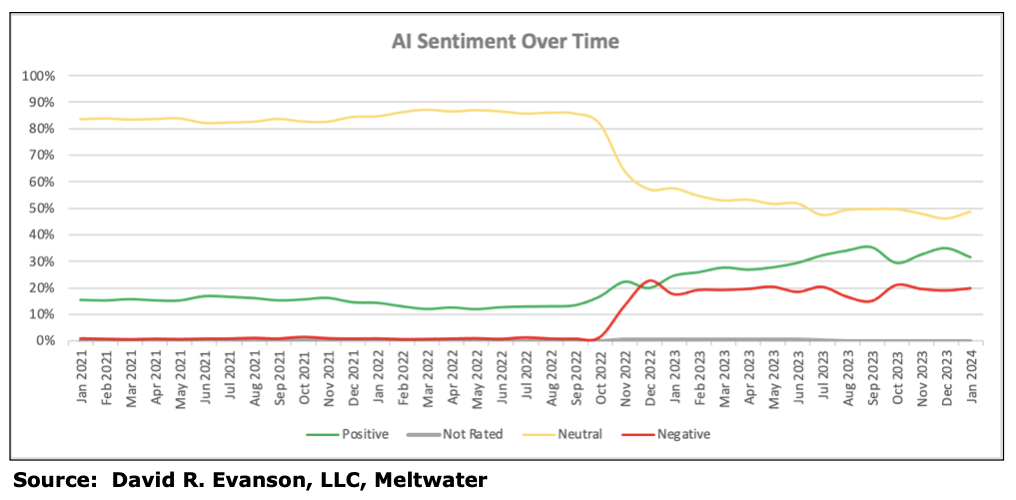The media is positive about AI, but it’s wary too as the charts below demonstrate. Once it became tangible in November of 2022 through the release of ChatGPT, red flags went up.
Using news tracking software, we measured the sentiment surrounding AI reporting. All totaled, our measurements took into account the sentiment of more than 160 million articles published between January 2021 to January 2024 by U.S. media outlets.


Key inferences:
- The introduction of AI to the public at large in November 2022 produced a large change in how it was reported on: The percentage of news stories that were neutral in tone fell from nearly 90% to less than 50%.
- The dip in neutral sentiment was replaced by a sharp uptick in negative sentiment.
- A tenable inference from this shift is that once AI was widely accessible with the launch of ChatGPT, reporters became more alarmed about the damage it could do. Notable also is that positive sentiment has grown too.
- Sentiment, for now, is fairly stable. Notable, so far, is sentiment that is neutral, when it does change, more often changes to negative.
- These measures of sentiment are increasingly accurate as the number of monthly articles concerning AI has increased from a few hundred thousand per month before its release to nearly 14 million a month currently.
The wariness might be attributable to disagreement over the most basic fact of all. When queried, ChatGPT said it was “publicly released by OpenAI in November 2020.” News sources, including technology standard-bearer TechCrunch, put the date at November 22, 2022.
If ChatGPT is at odds with the sources it draws from, what other willful decisions is it making? Put this writer in the camp of negative sentiment.

